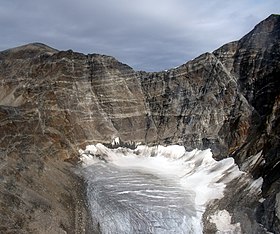
Back بيغماتيت Arabic Peqmatit Azerbaijani Пегматит Bulgarian Pegmatita Catalan Pegmatit Czech Pegmatit German Πηγματίτης Greek Pegmatita Spanish Pegmatiit Estonian Pegmatita Basque



A pegmatite is an igneous rock showing a very coarse texture, with large interlocking crystals usually greater in size than 1 cm (0.4 in) and sometimes greater than 1 meter (3 ft). Most pegmatites are composed of quartz, feldspar, and mica, having a similar silicic composition to granite. However, rarer intermediate composition and mafic pegmatites are known.
Many of the world's largest crystals are found within pegmatites. These include crystals of microcline, quartz, mica, spodumene, beryl, and tourmaline. Some individual crystals are over 10 m (33 ft) long.[1]
Most pegmatites are thought to form from the last fluid fraction of a large crystallizing magma body. This residual fluid is highly enriched in volatiles and trace elements, and its very low viscosity allows components to migrate rapidly to join an existing crystal rather than coming together to form new crystals. This allows a few very large crystals to form. While most pegmatites have a simple composition of minerals common in ordinary igneous rock, a few pegmatites have a complex composition, with numerous unusual minerals of rare elements. These complex pegmatites are mined for lithium, beryllium, boron, fluorine, tin, tantalum, niobium, rare earth elements, uranium, and other valuable commodities.
- ^ Schwartz, G. (1928). "The Black Hills Mineral Region". American Mineralogist. 13: 56–63.